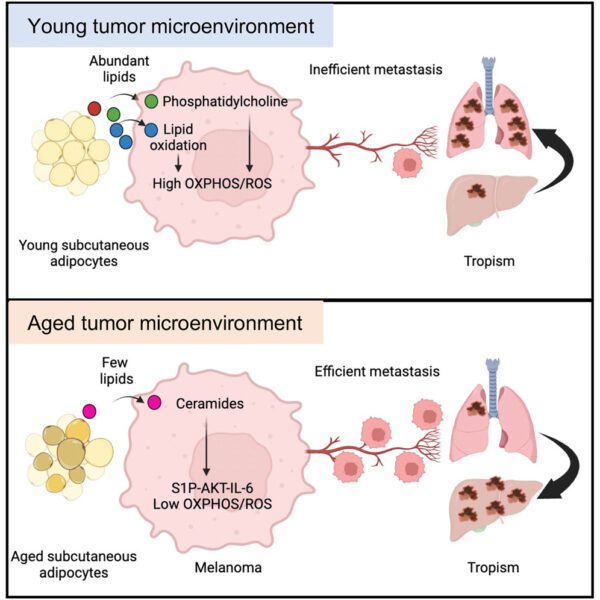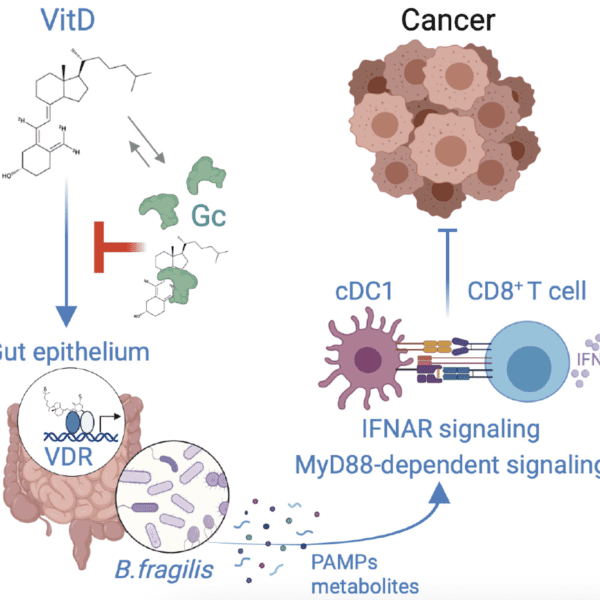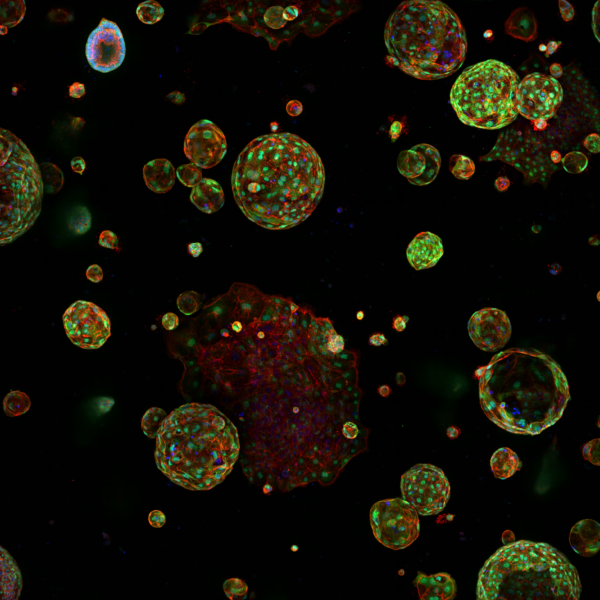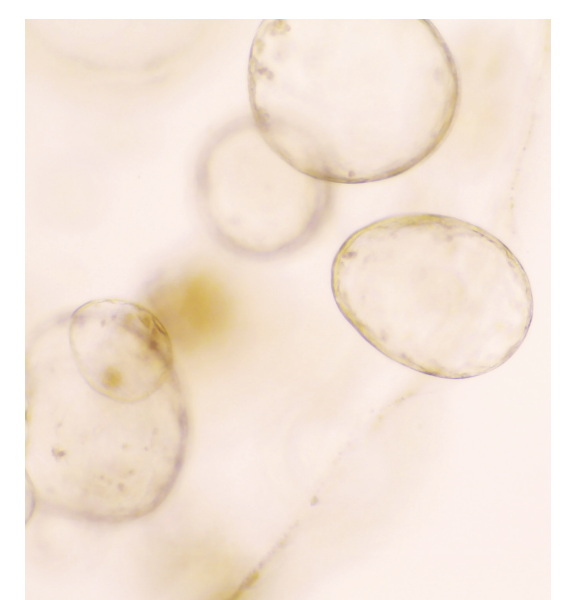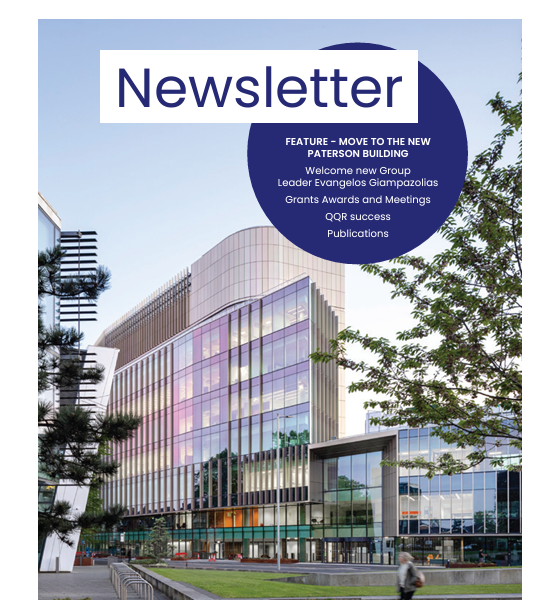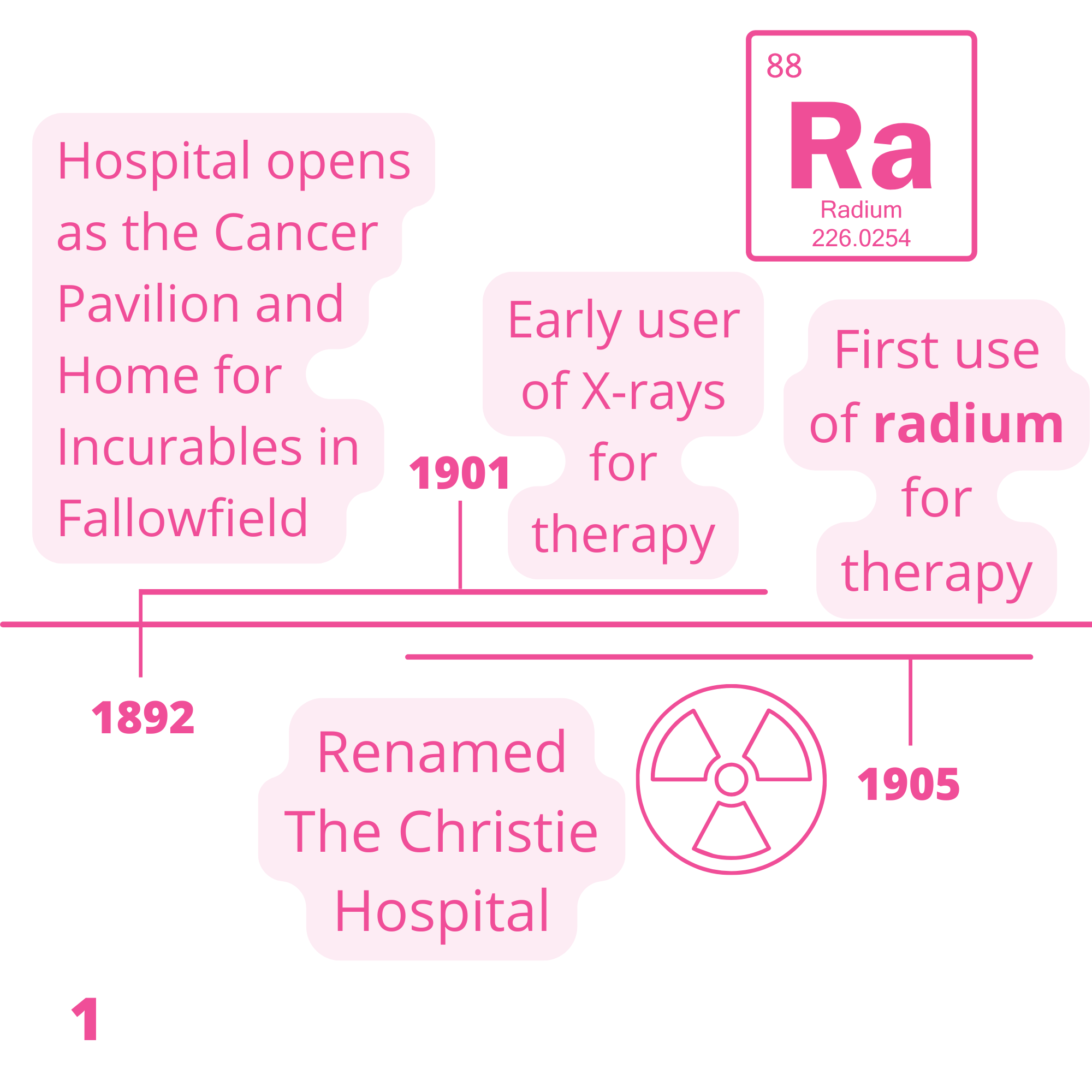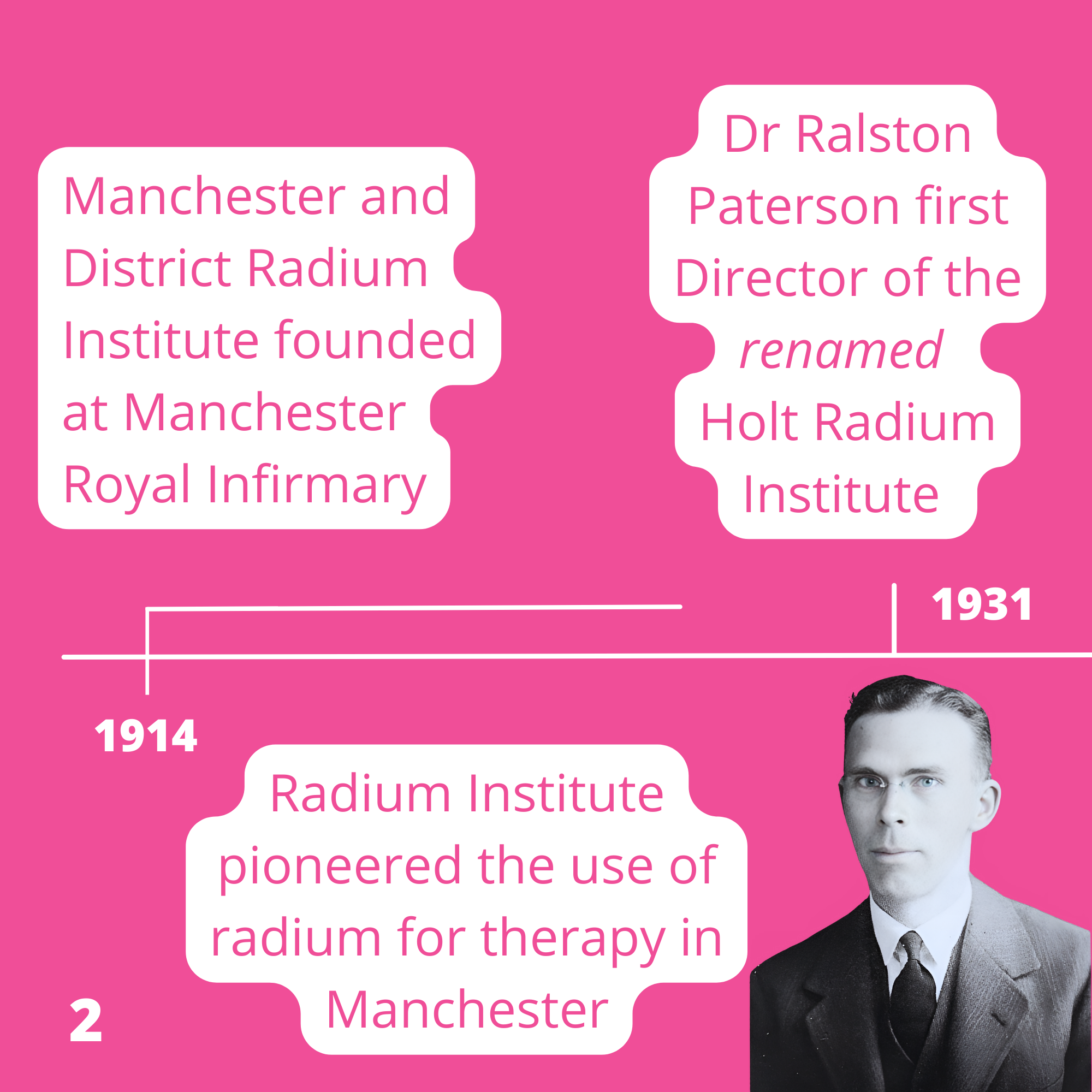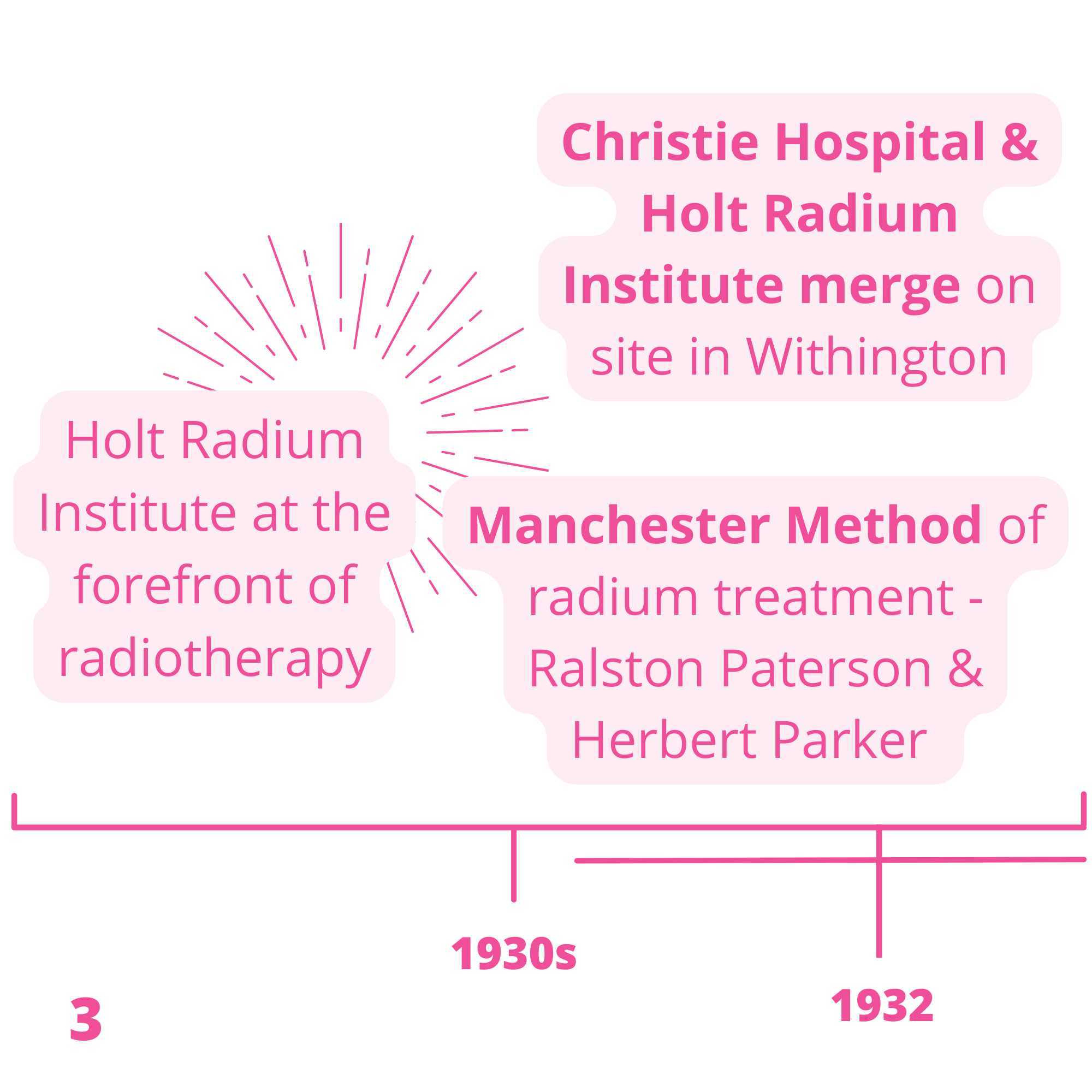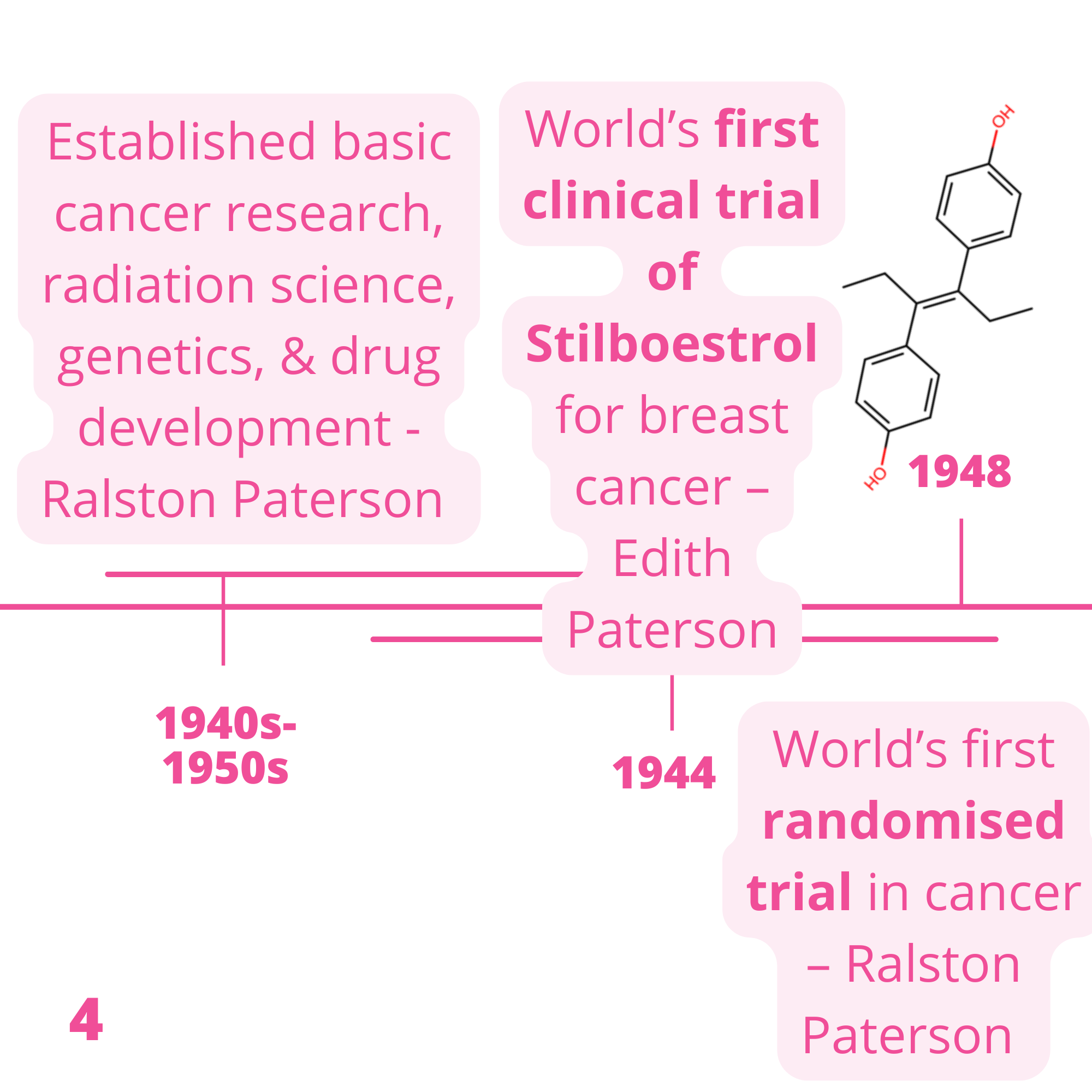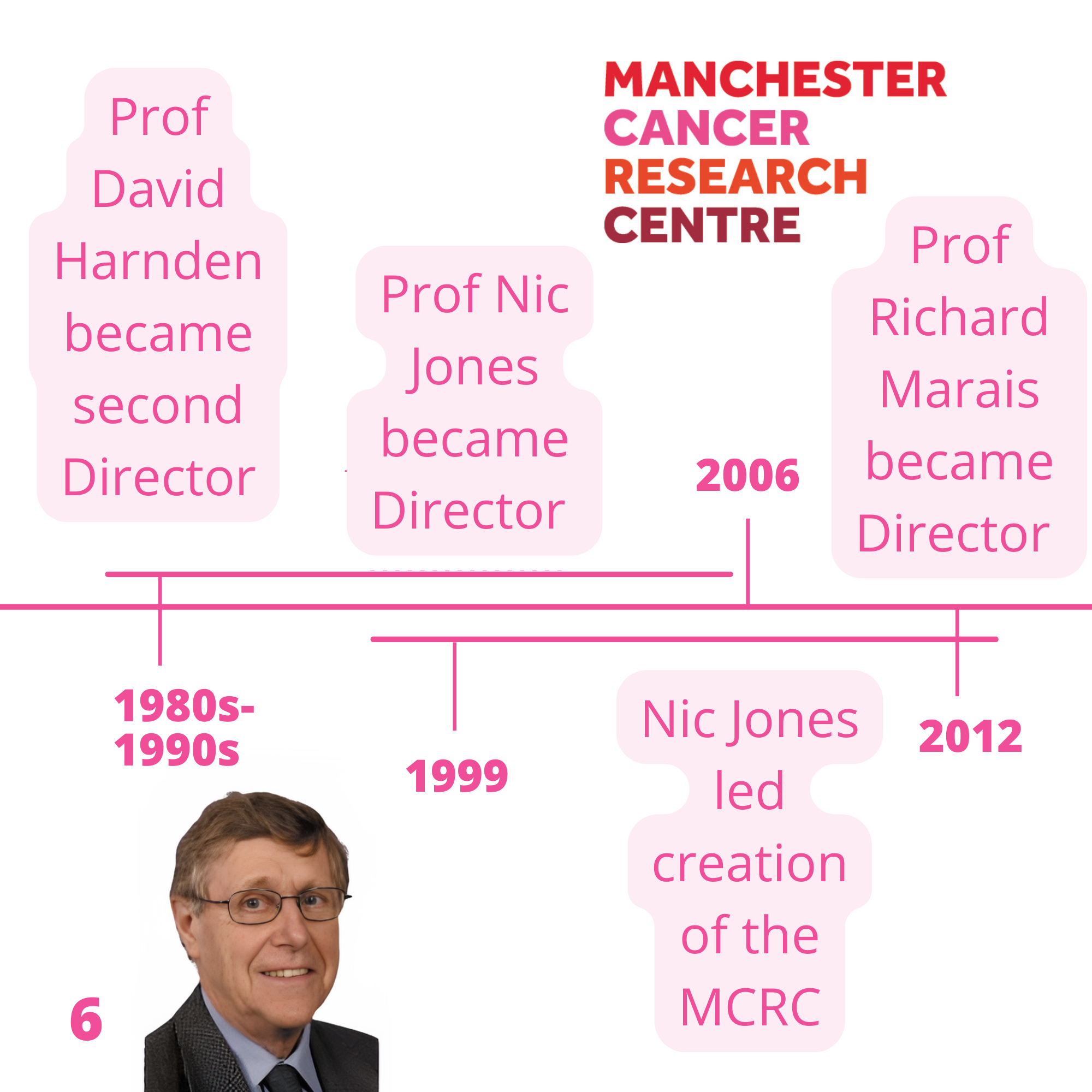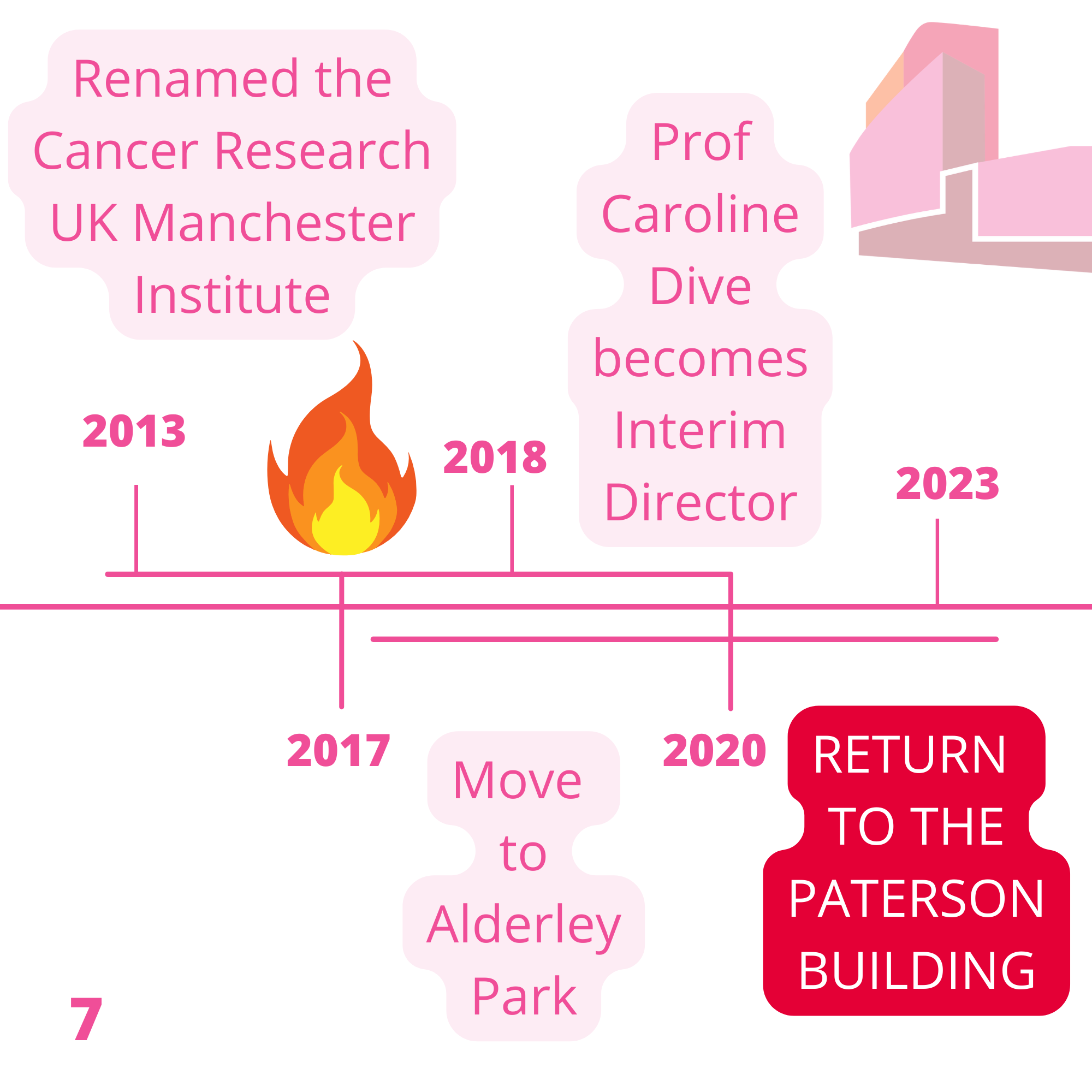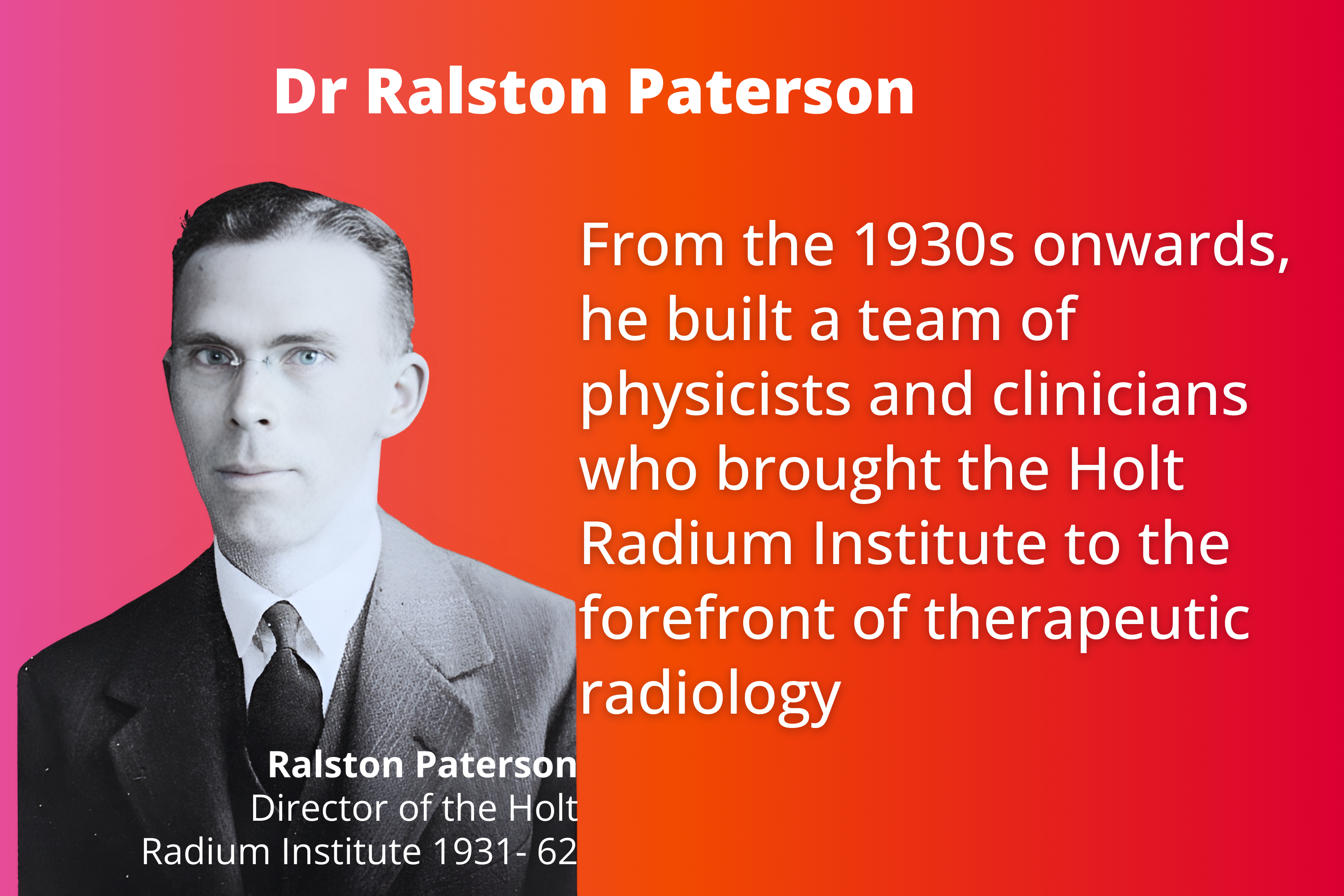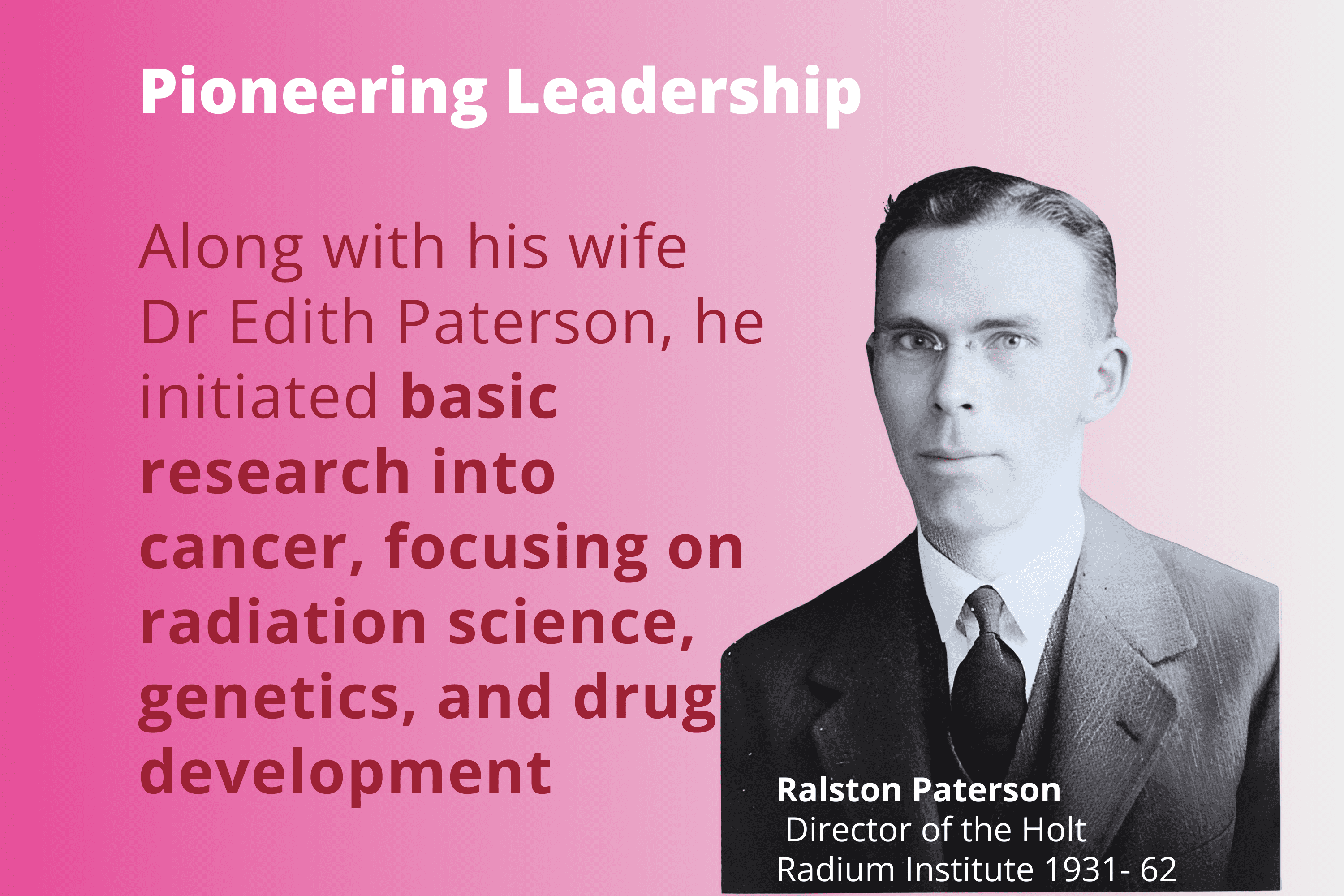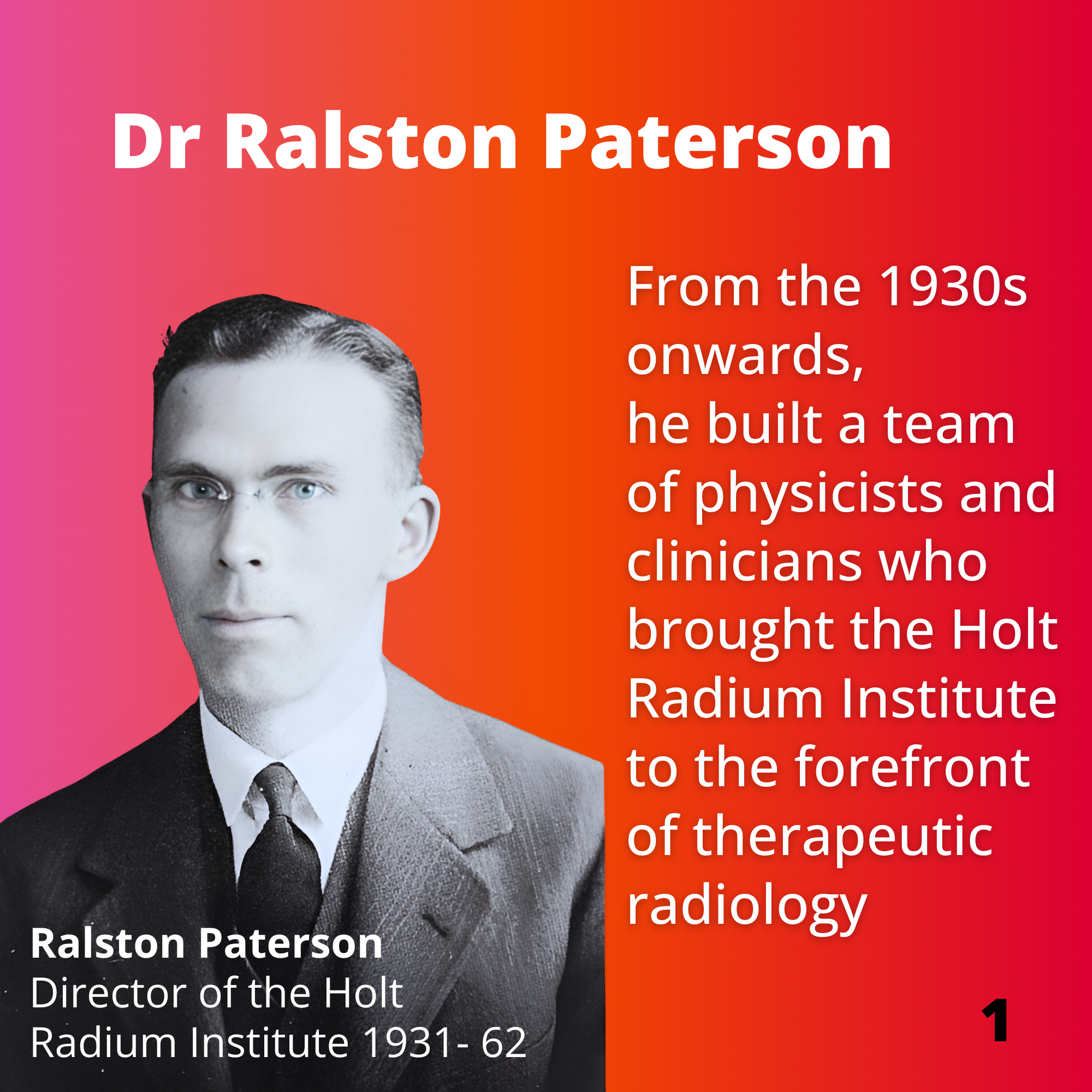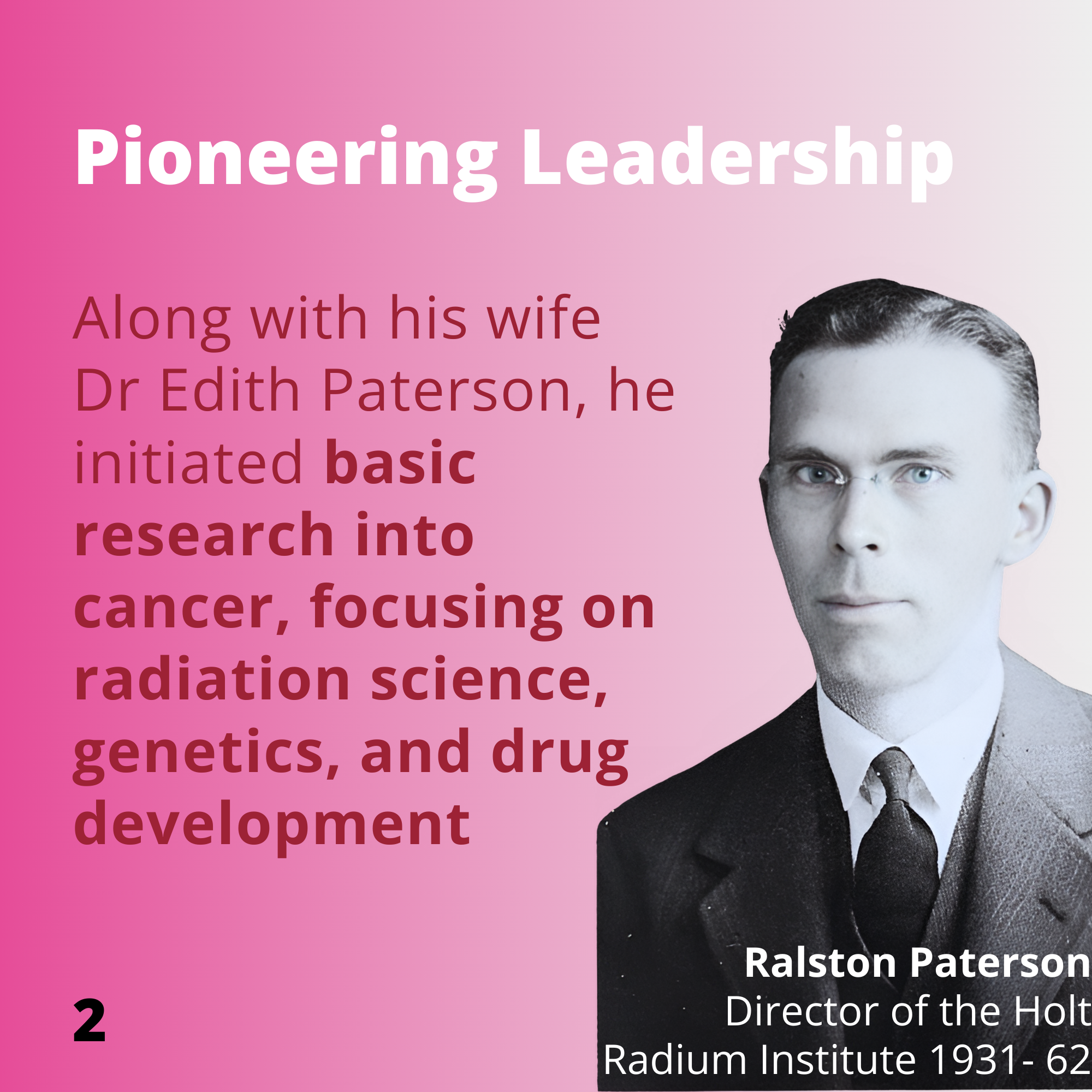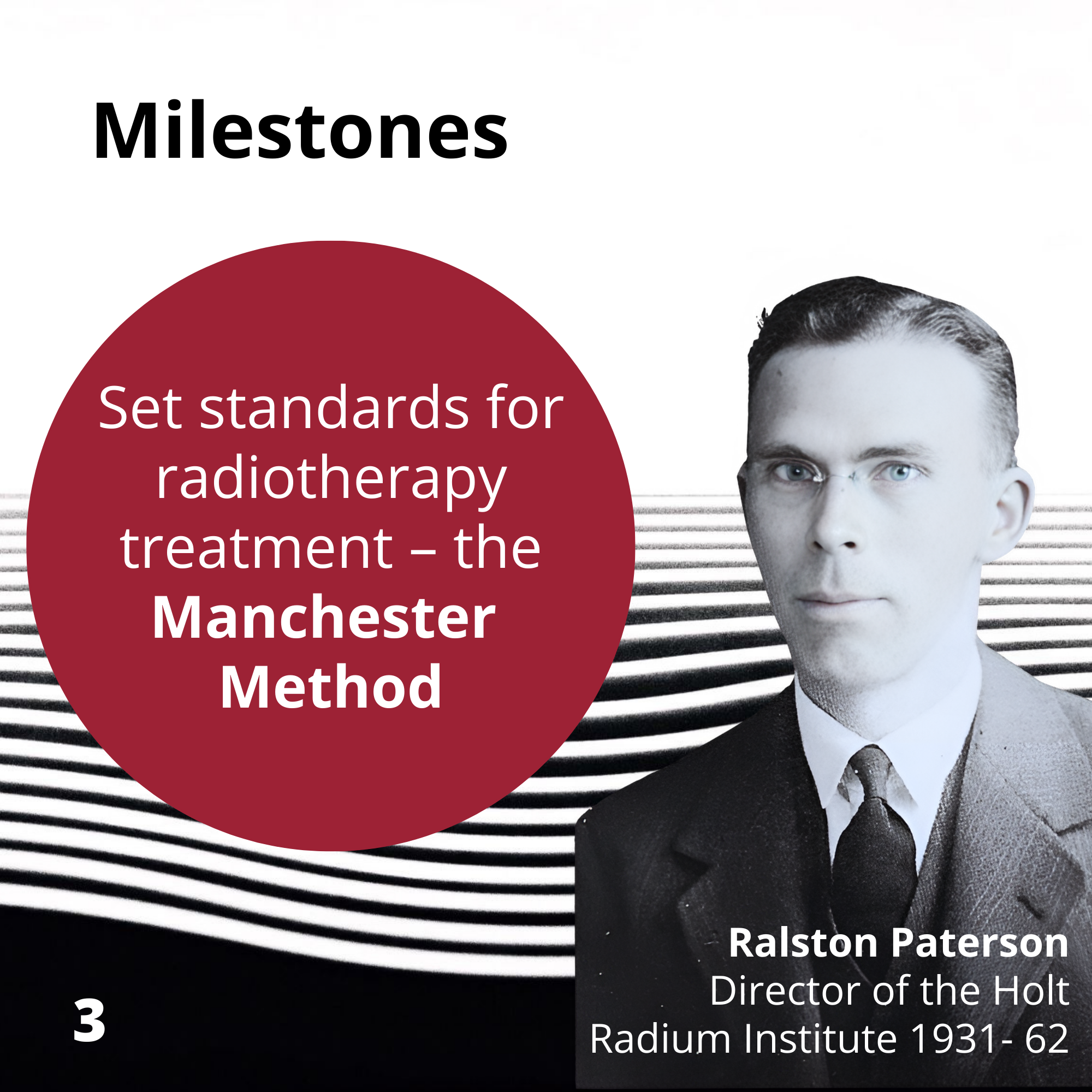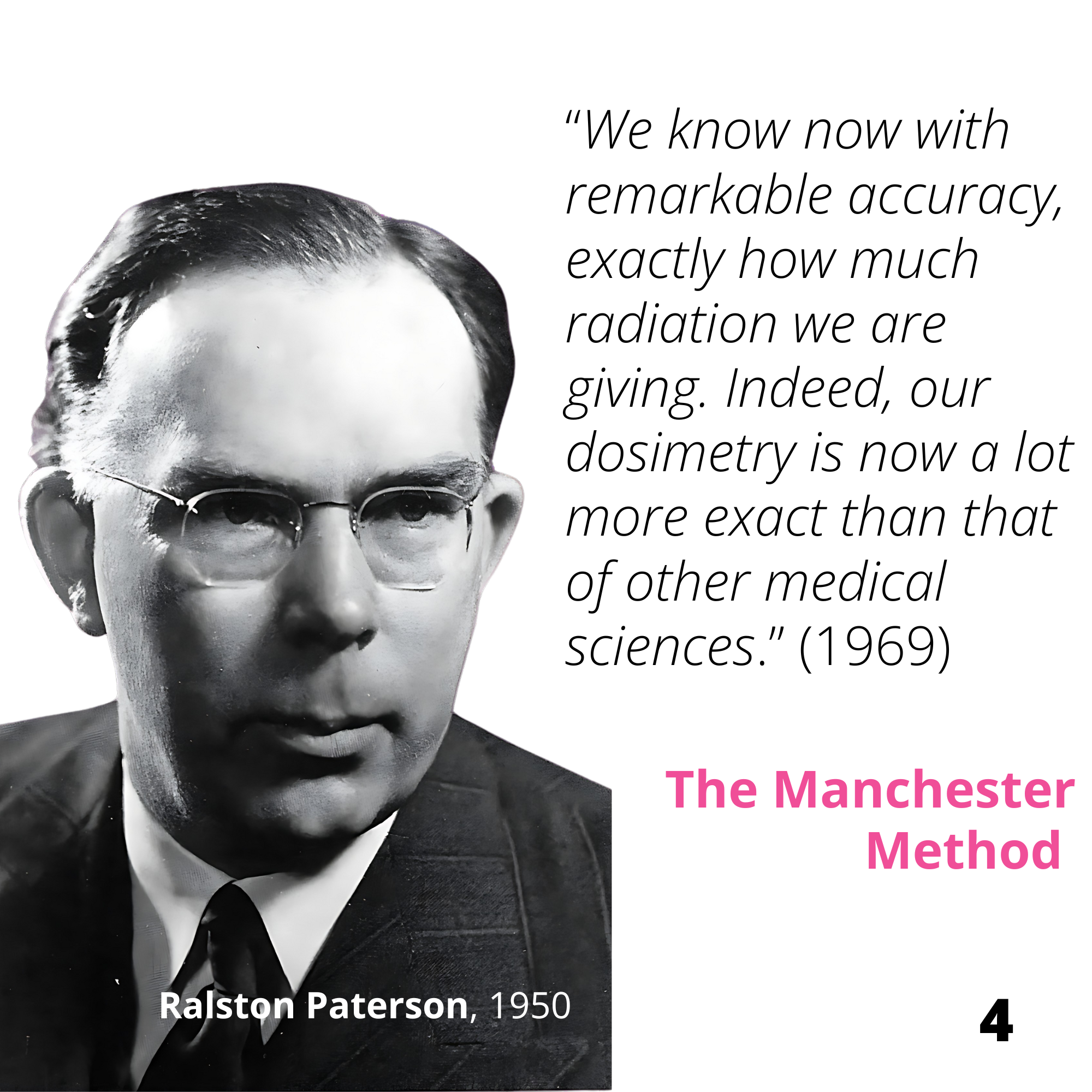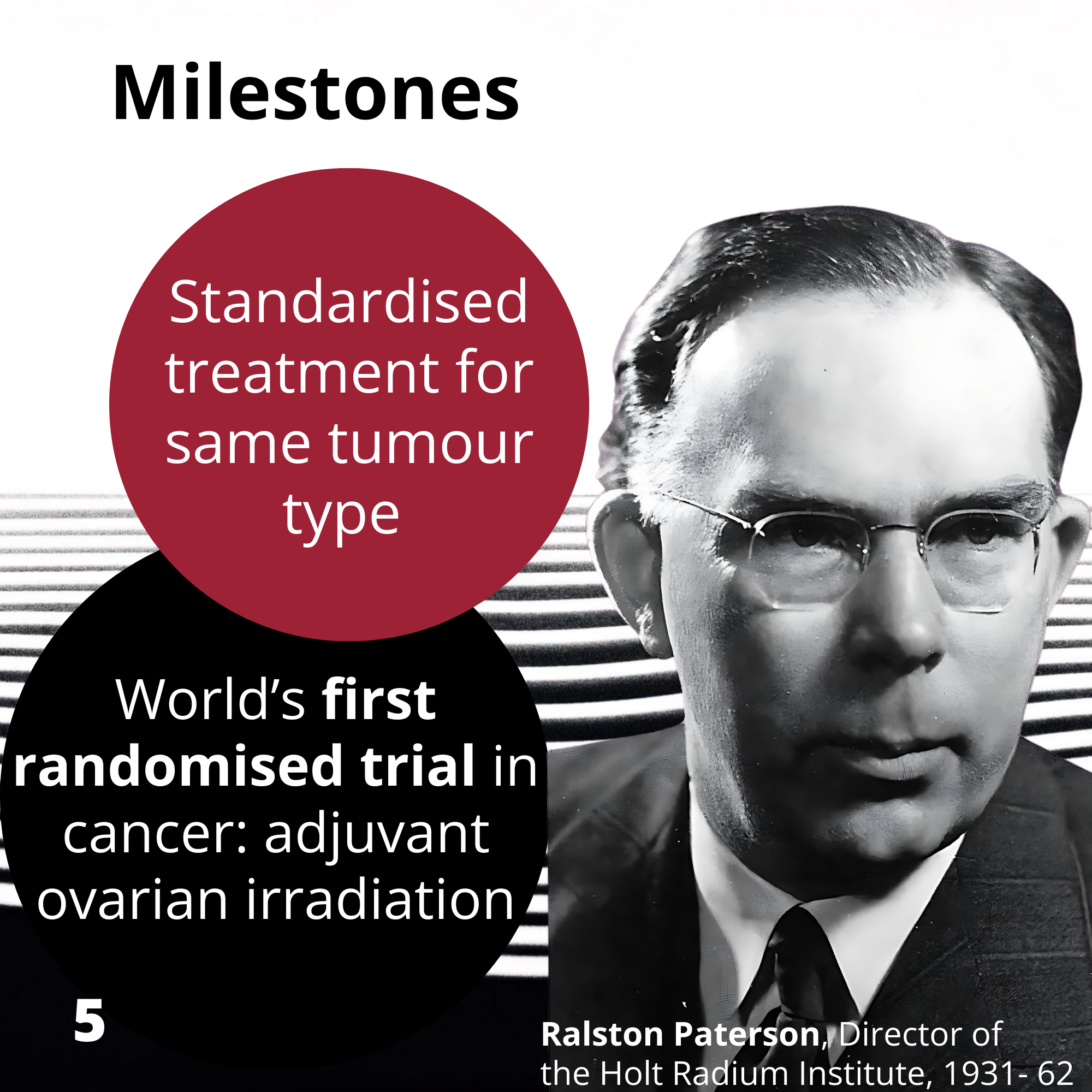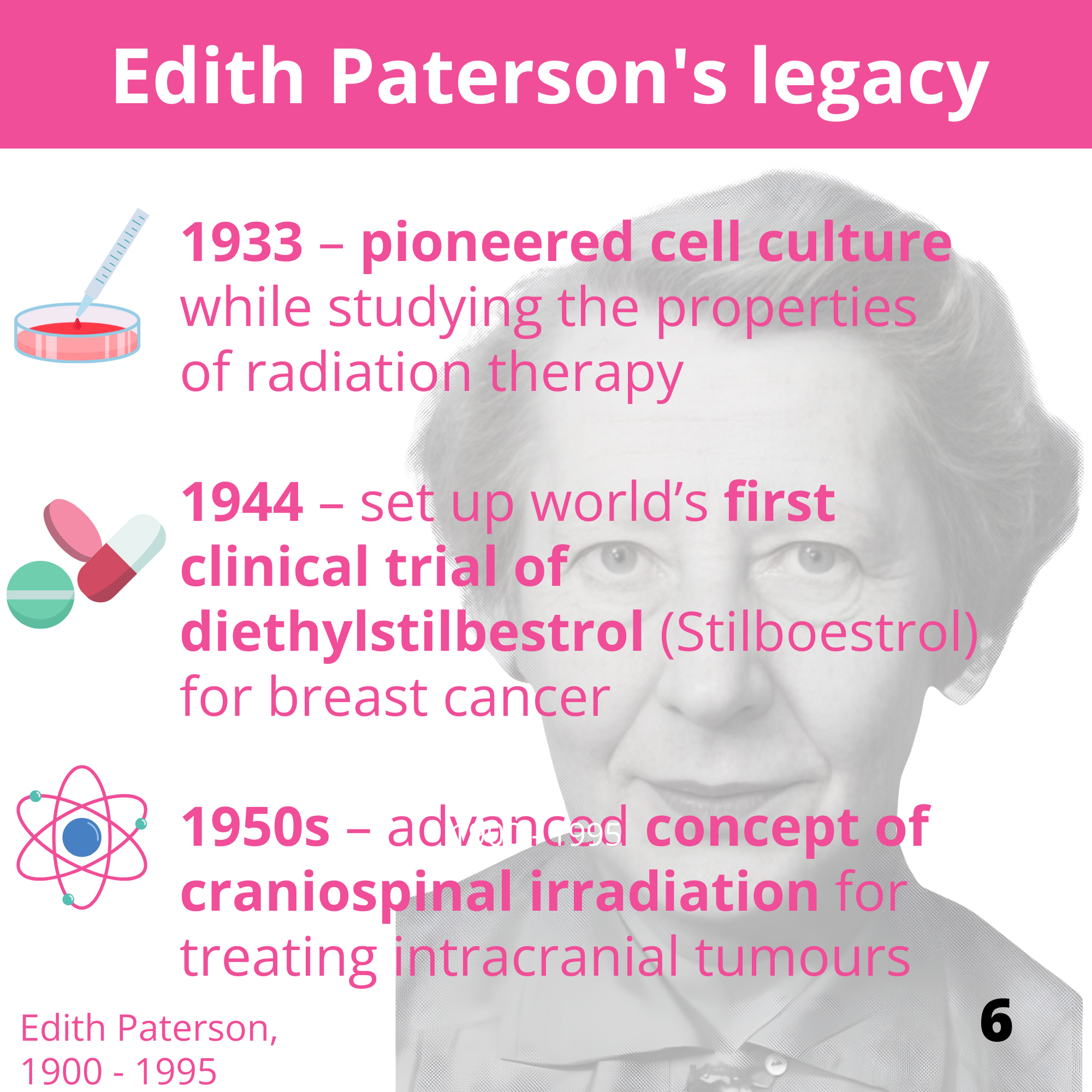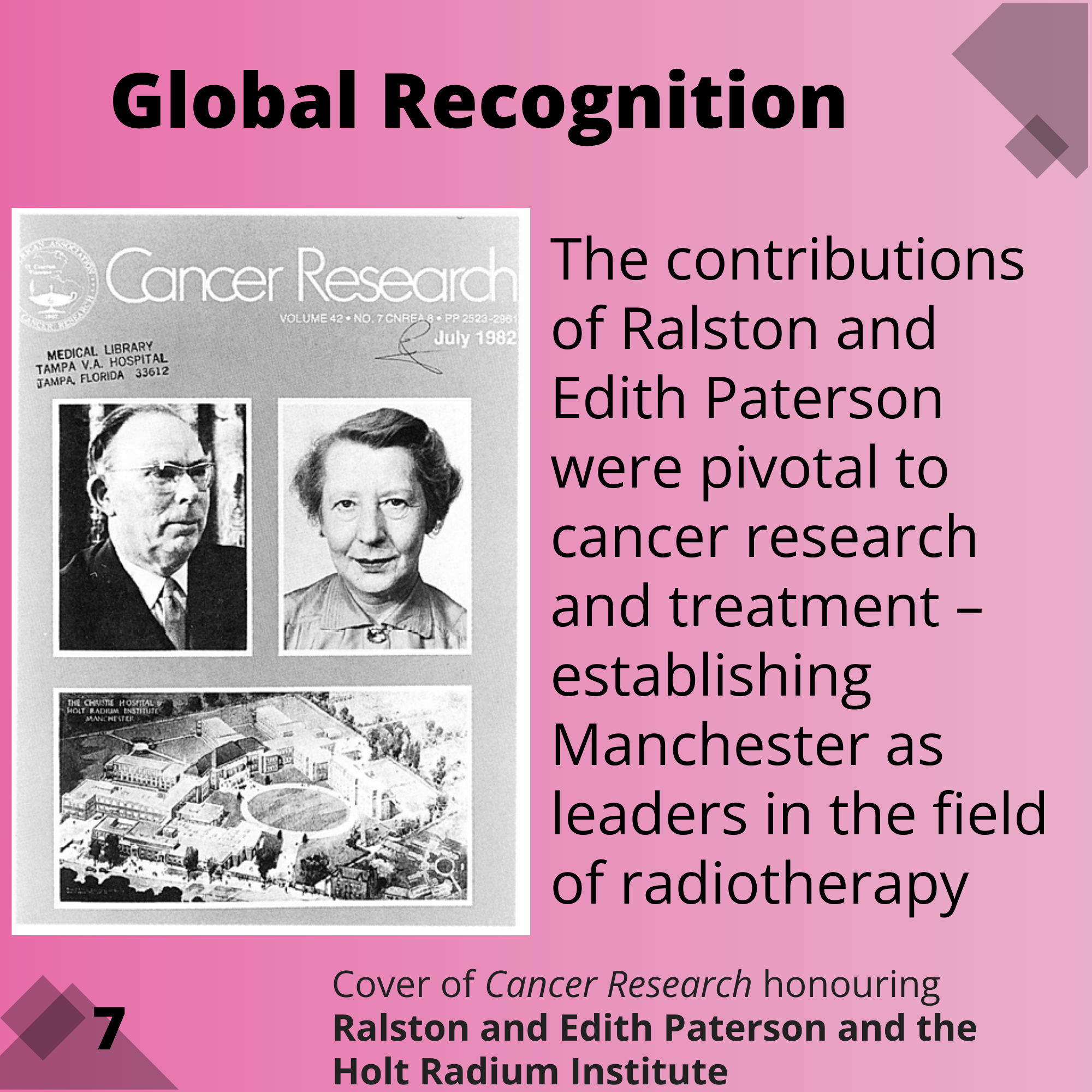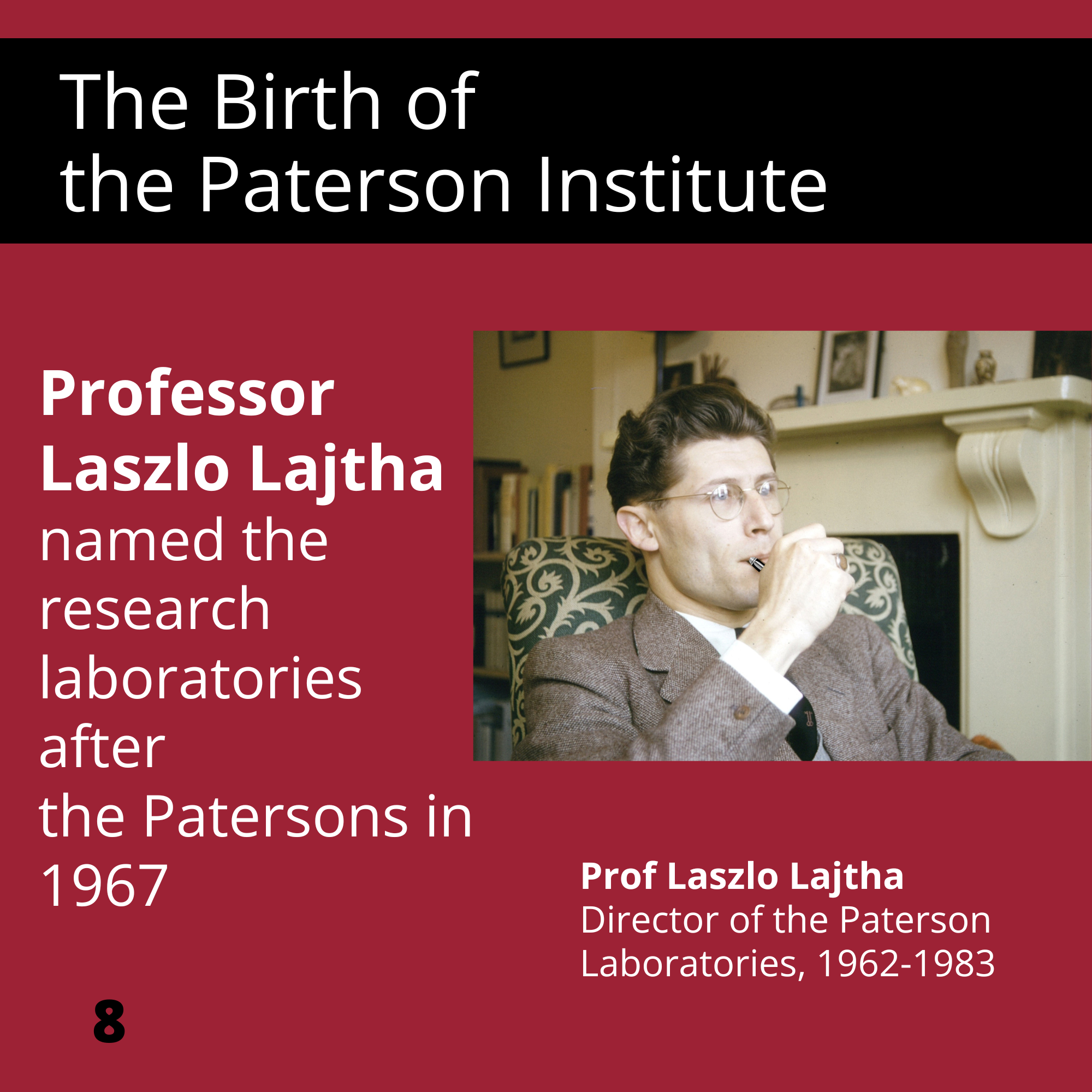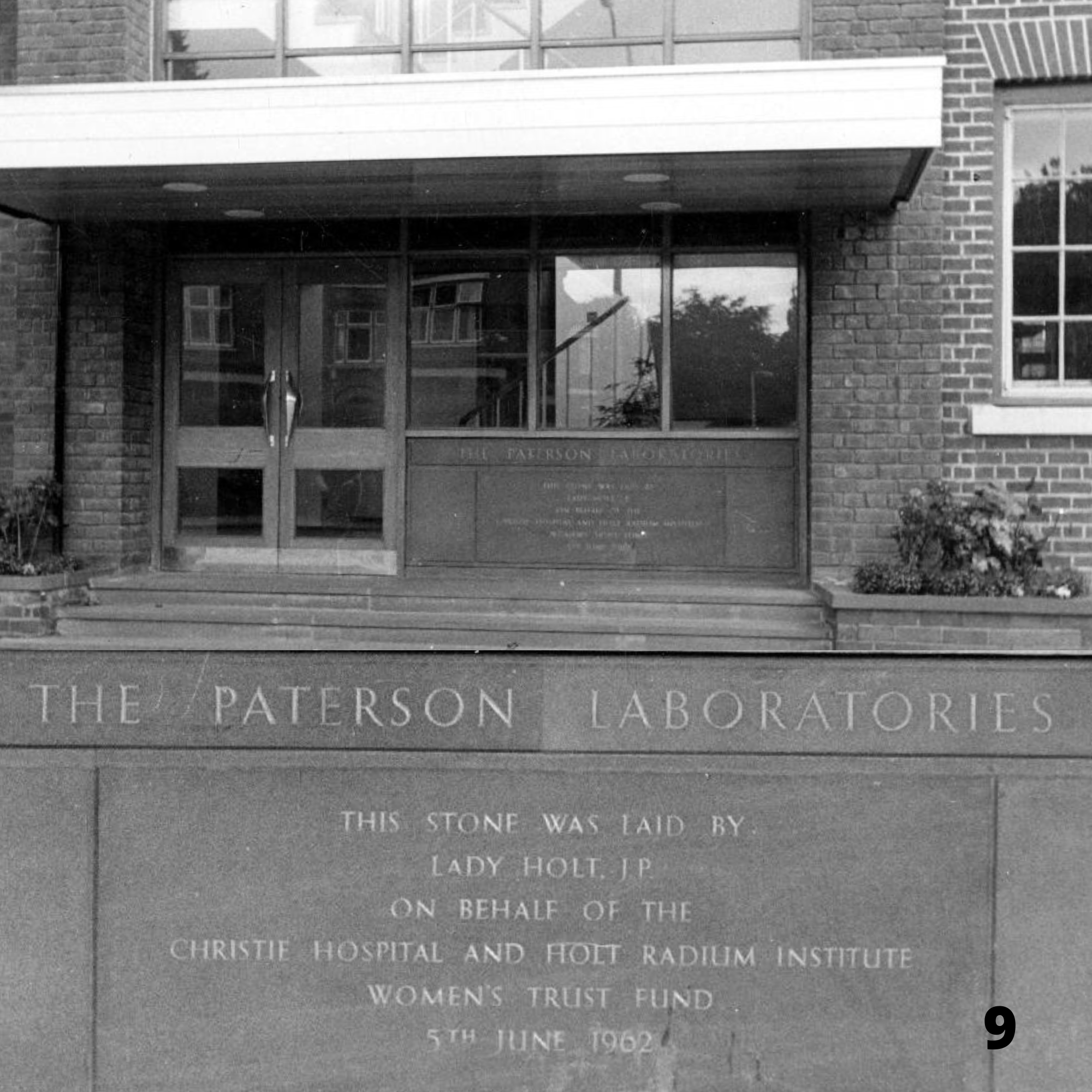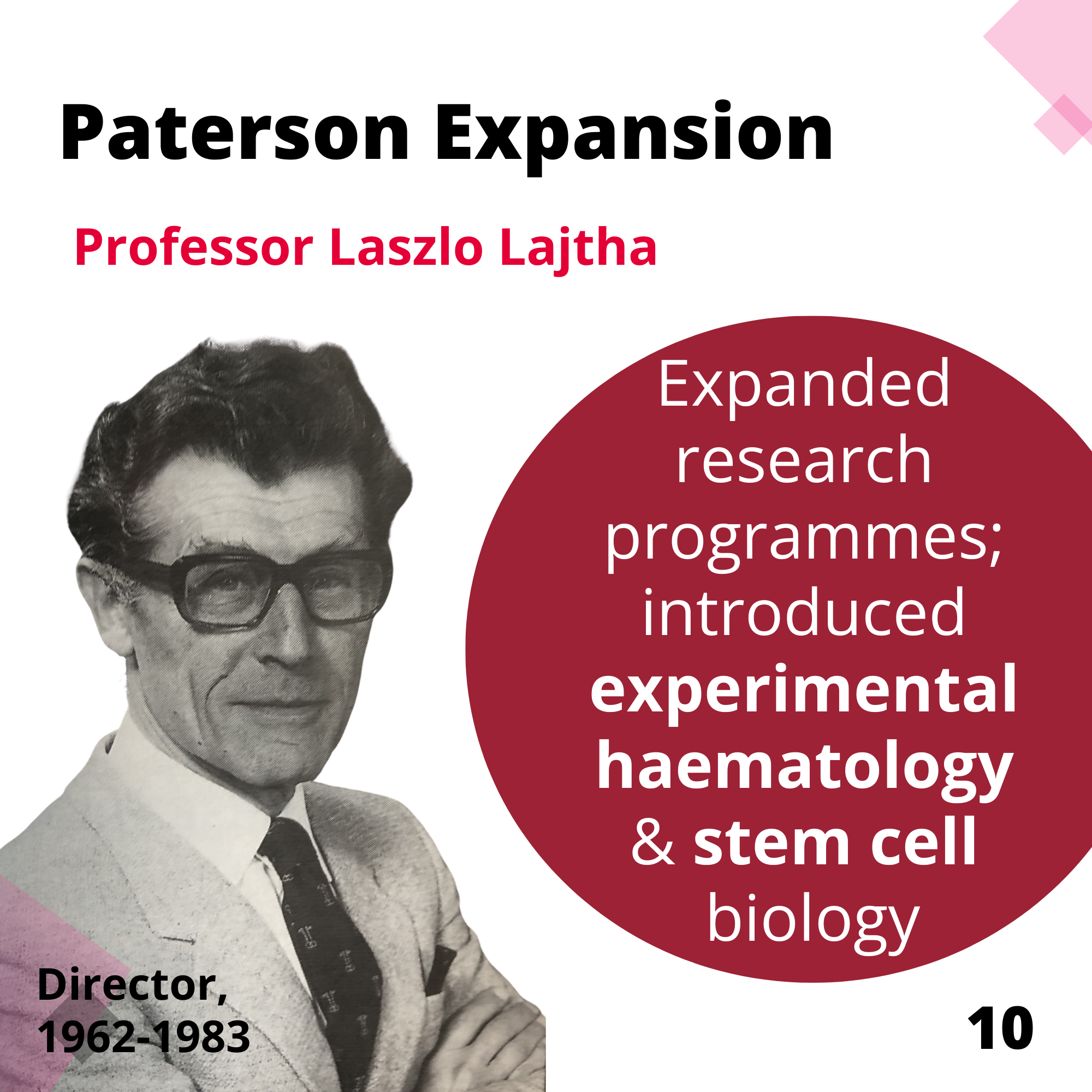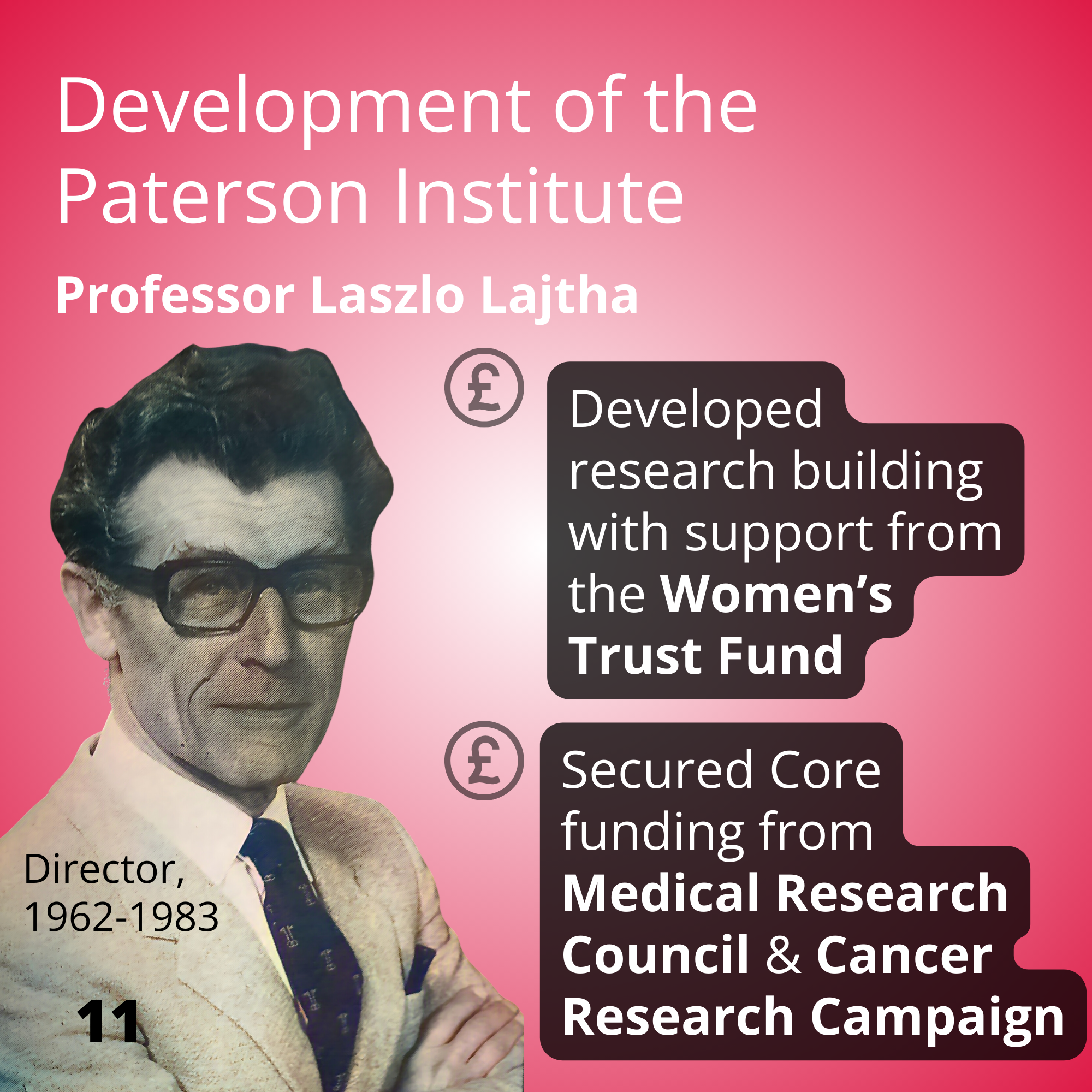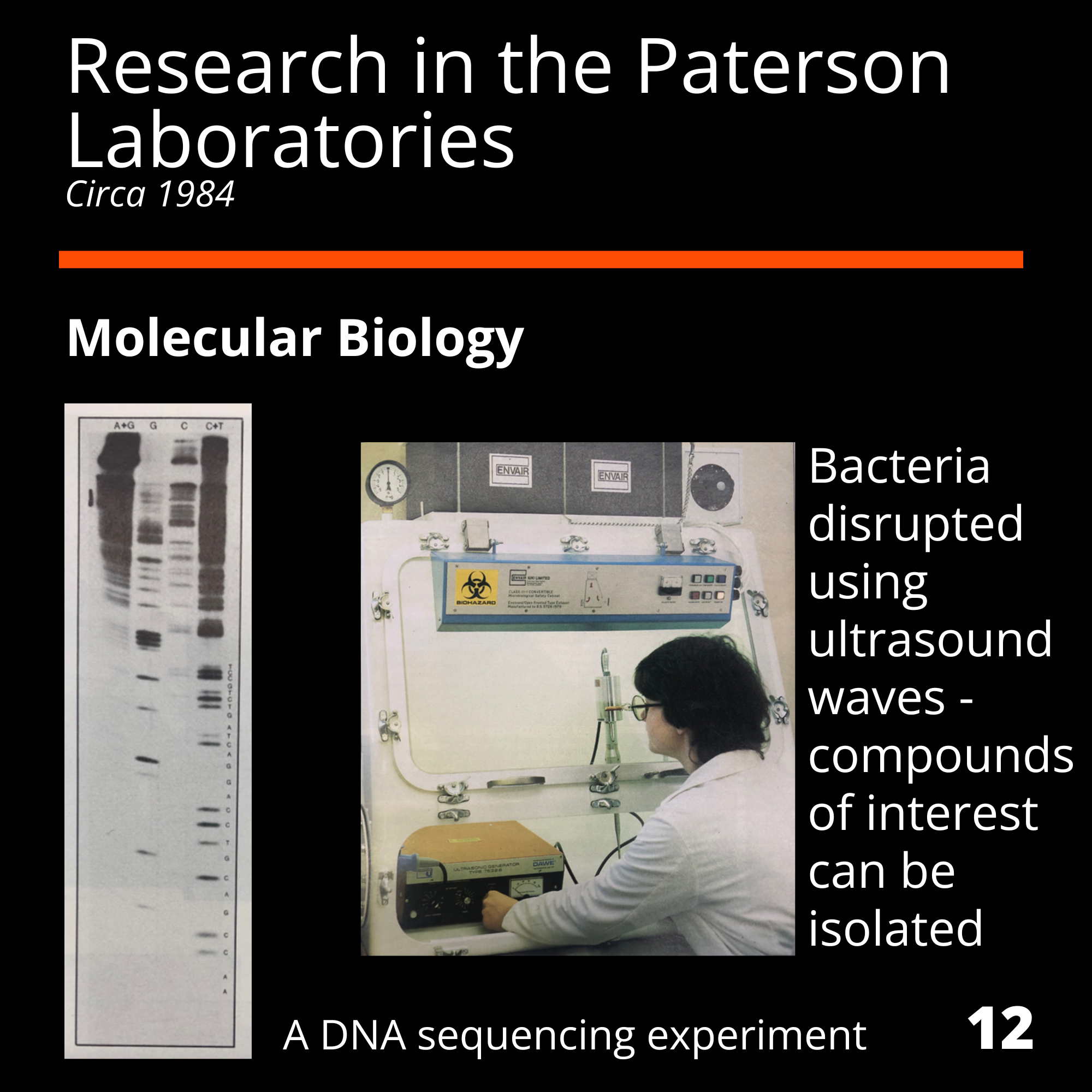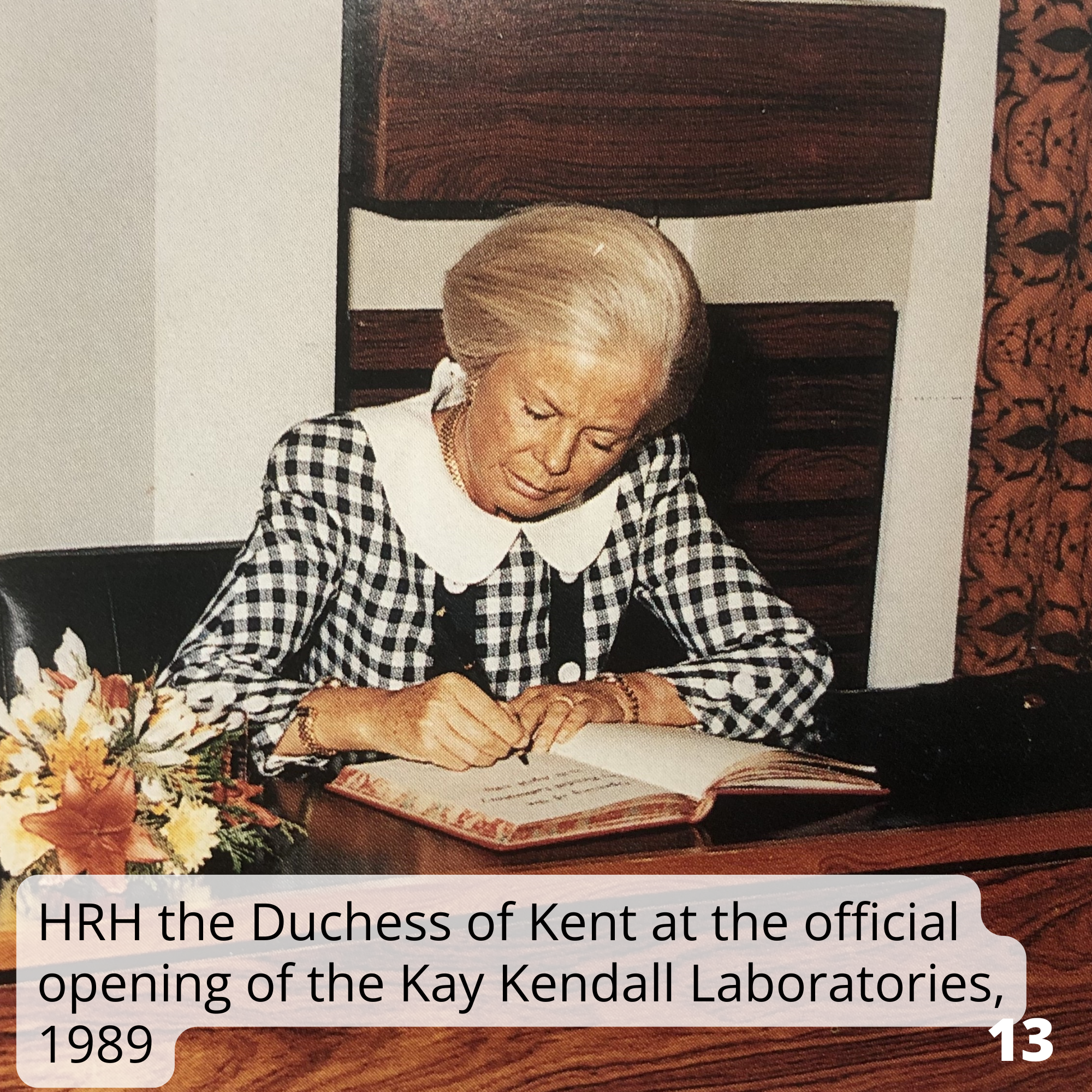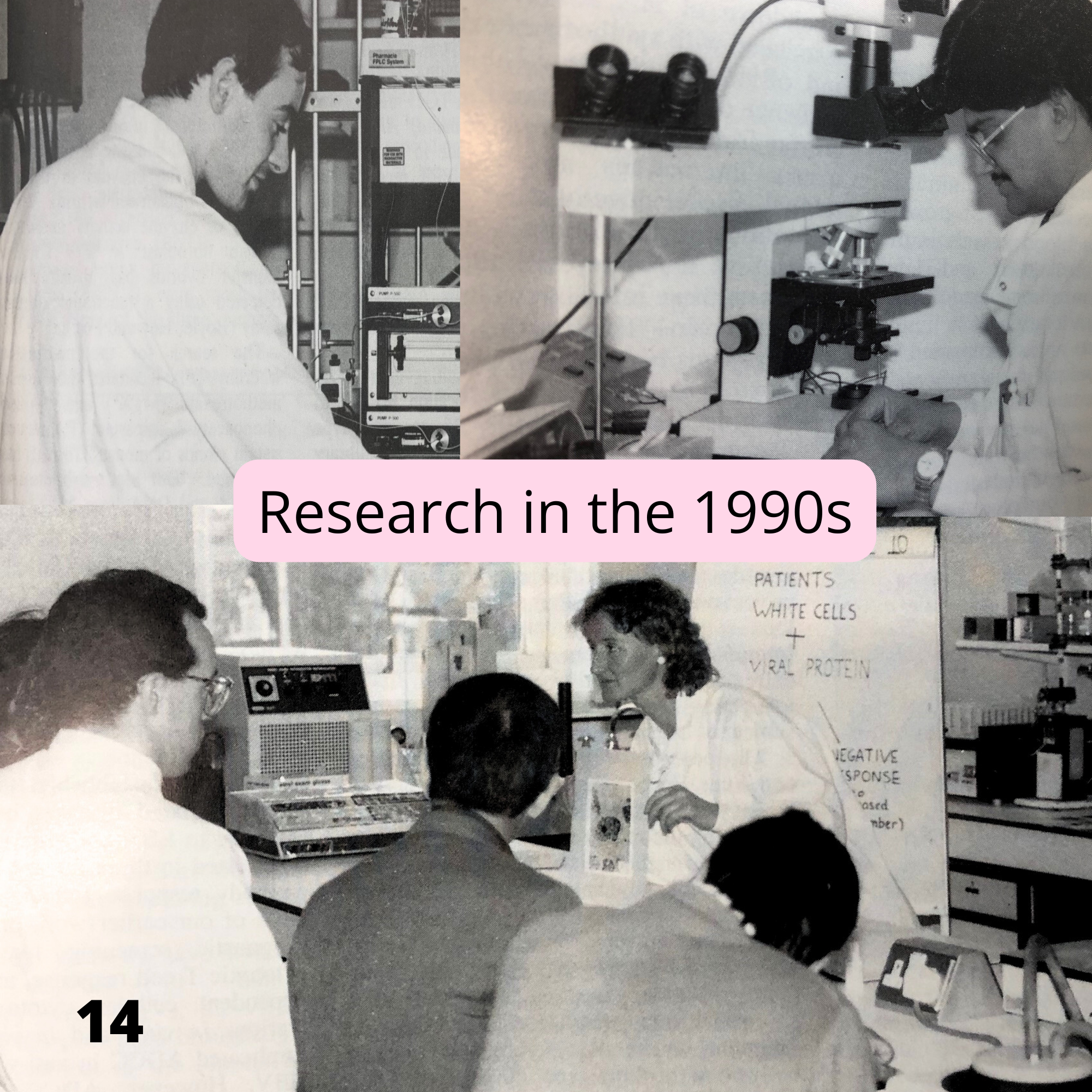Research History
Research History
Early History
1892 – 1900s
Specialised cancer treatment in Manchester developed in the early years of the 20th Century with the establishment of two hospitals.
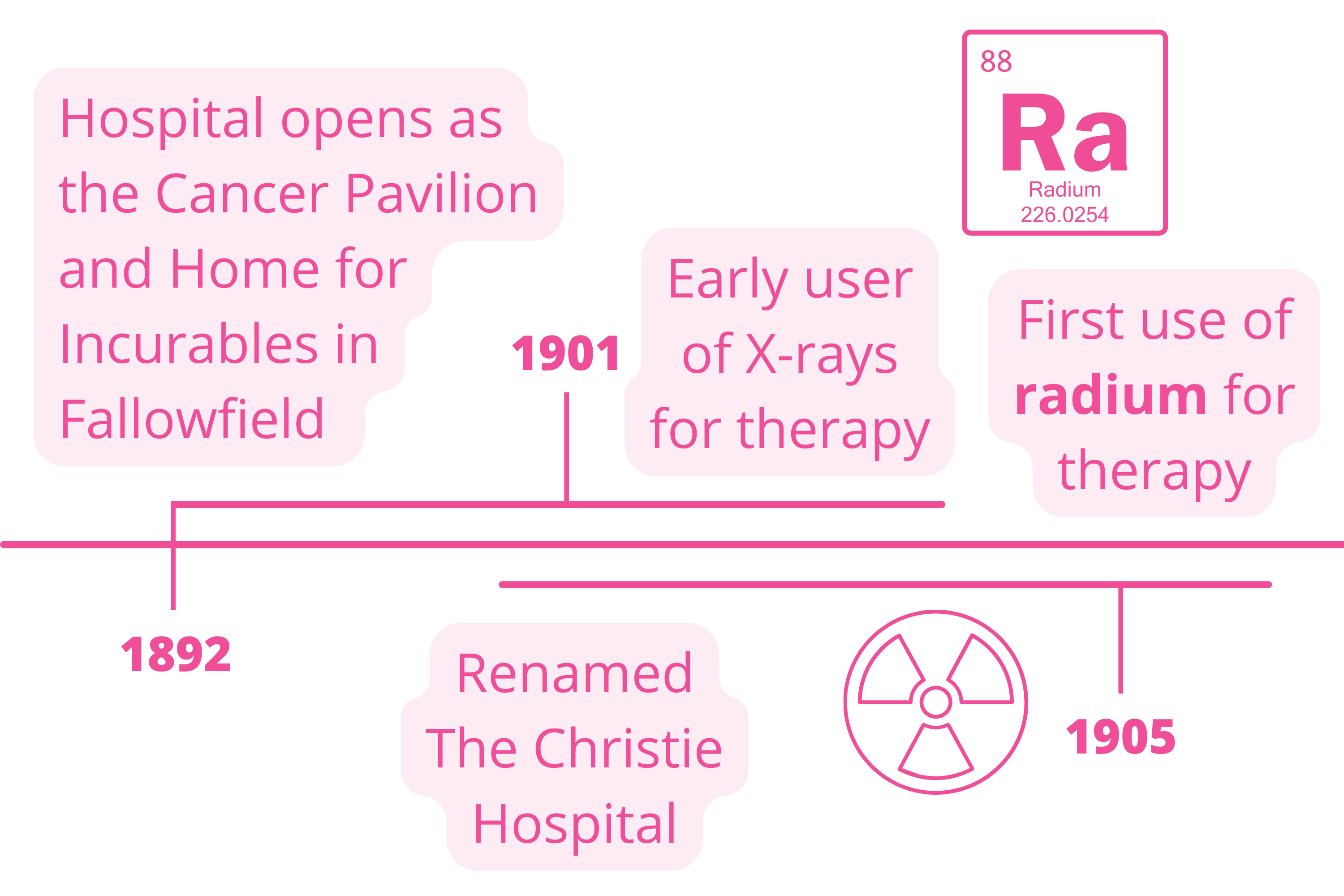
1930s
The Christie Hospital and the Holt Radium Institute came together in 1932 under the leadership of Ralston Paterson on the present site in Withington, about 2 miles south of the main campus of the University of Manchester and the Manchester Royal Infirmary.
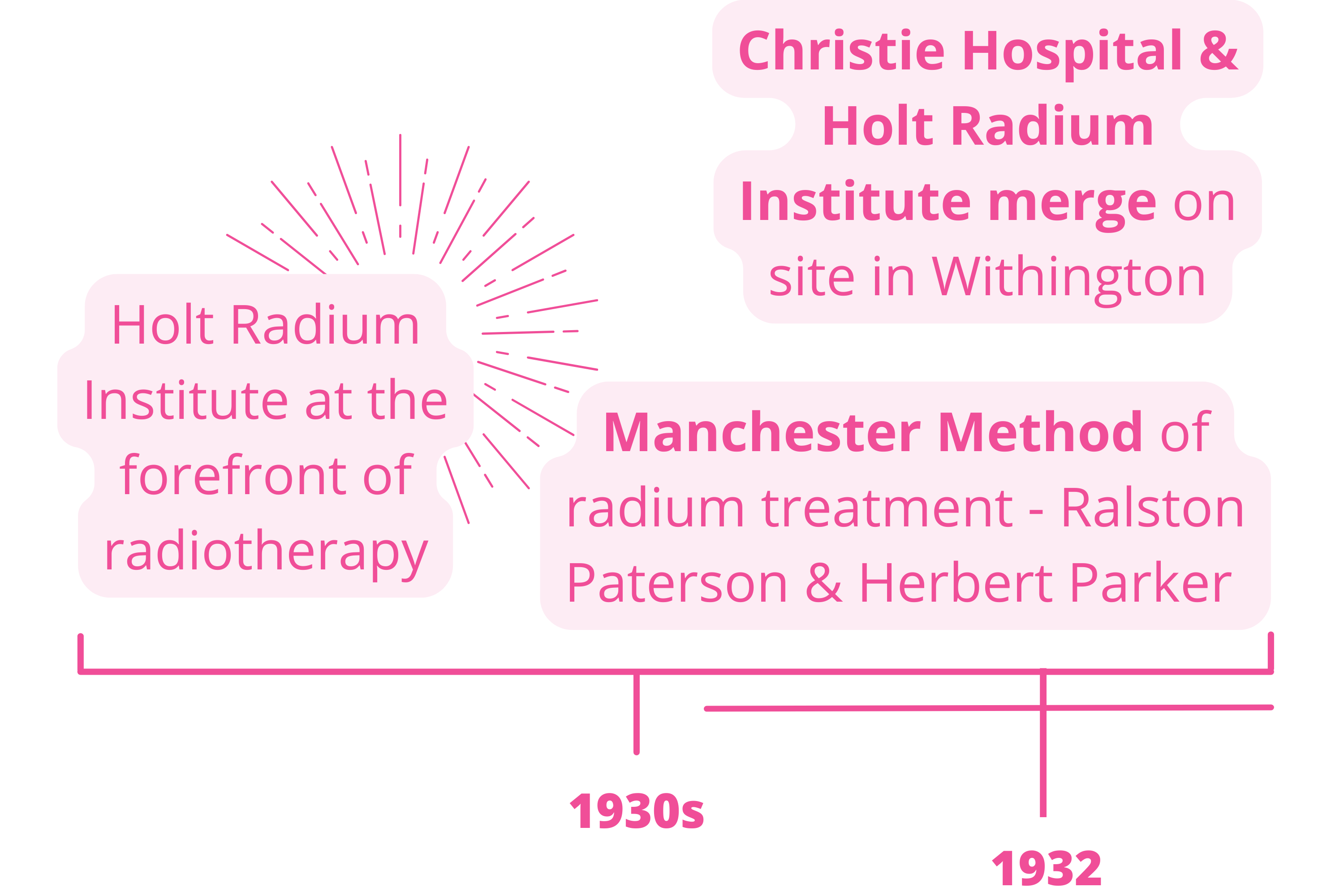
Professor Ralston Paterson
The first Director, Professor Ralston Paterson, was the leading authority in the world at that time in the treatment of cancer by radiotherapy.
He was instrumental in setting standards and establishing high quality radiotherapy treatment centres in many countries throughout the world.
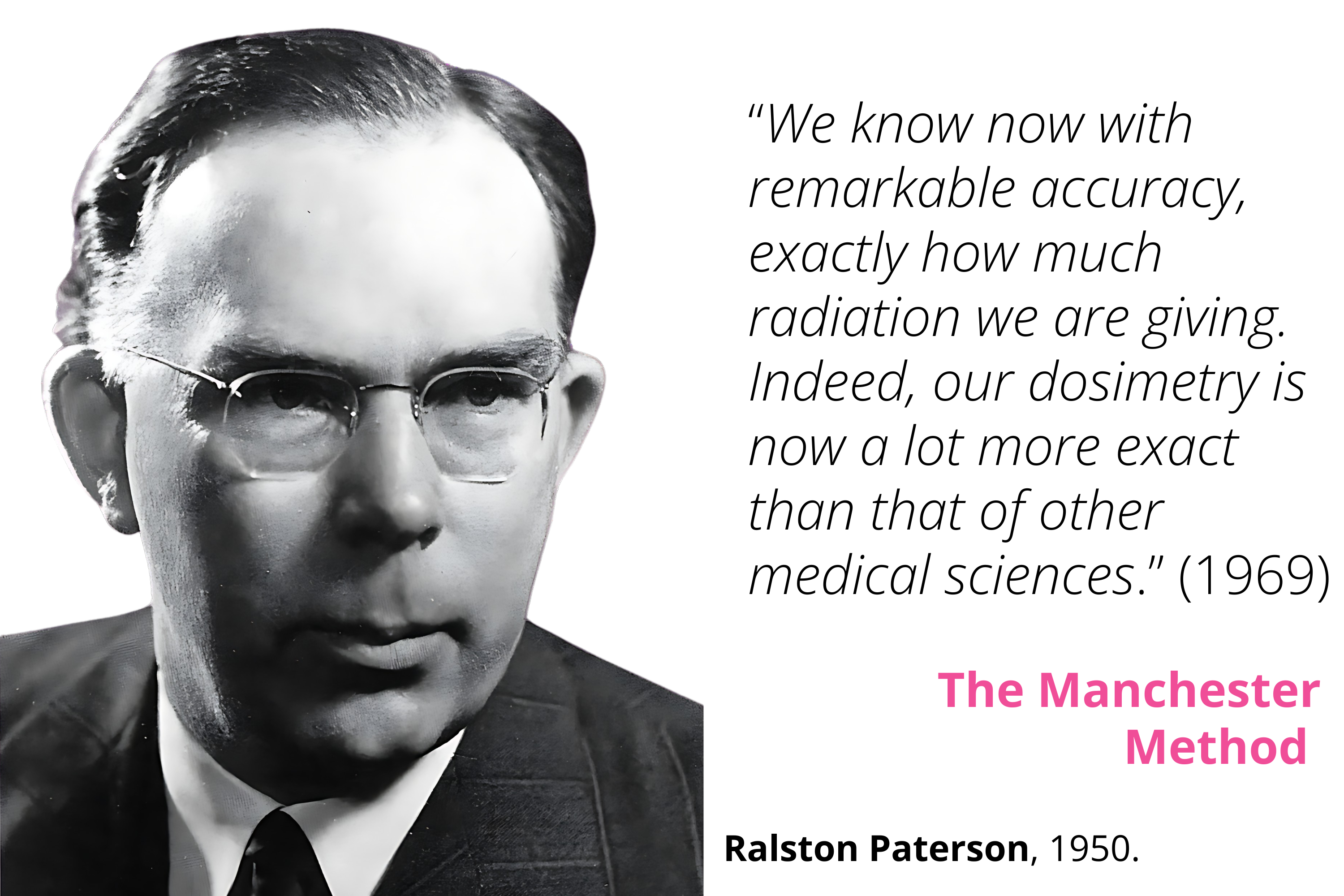
1940s-50s
Together with his wife, Dr Edith Paterson, Professor Ralston Paterson established a programme of basic research into cancer, particularly in the fields of radiation science, genetics and drug development.
The research was initially carried out in a series of huts and converted houses adjacent to the Hospital.
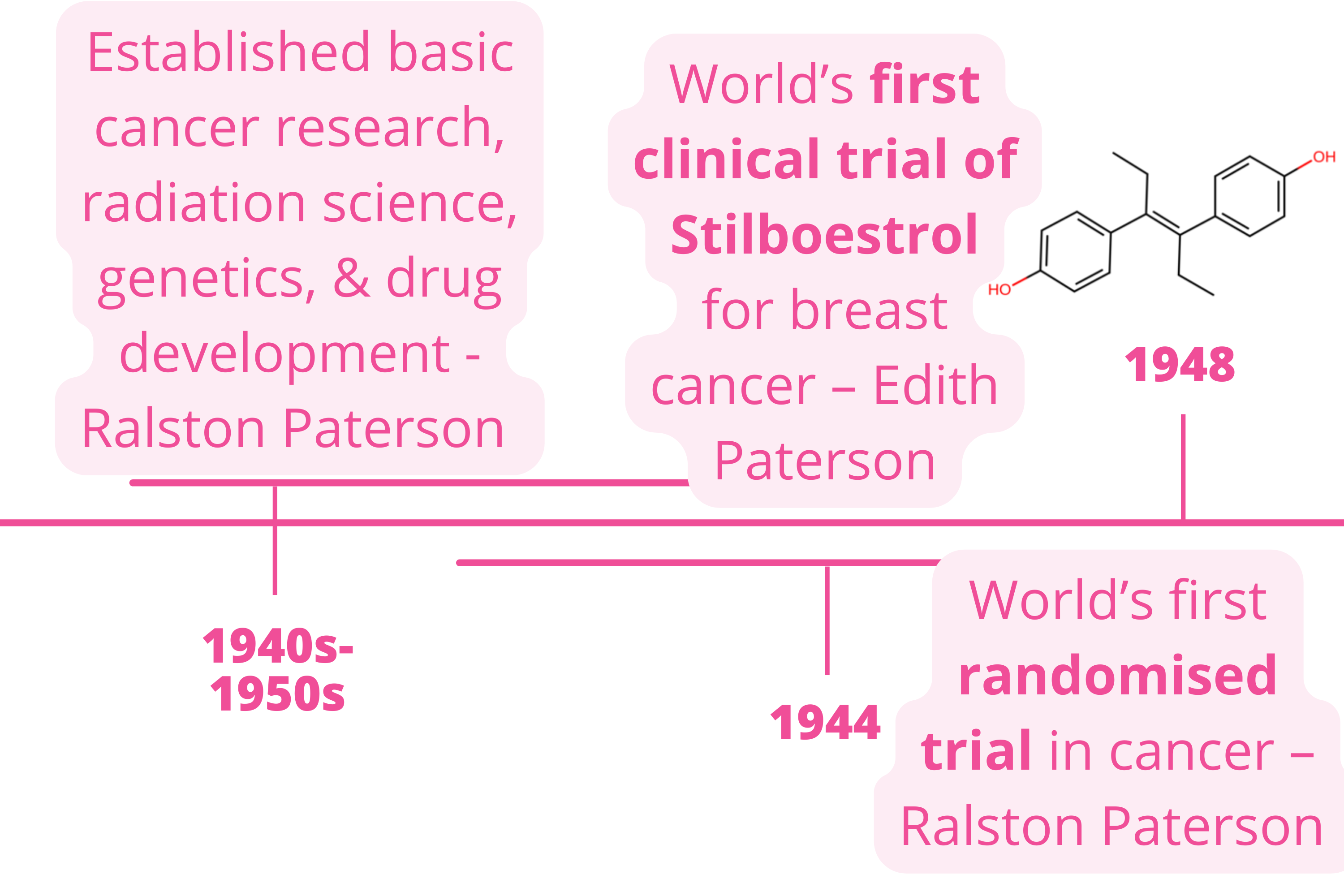
1960-70
When the Patersons retired in 1962, Professor Laszlo Lajtha was appointed as the first full-time director of the research laboratories. It was he who named the research laboratories after the Patersons. He built on the research programmes, started by his predecessors but, also, introduced research into his own fields of interest, experimental haematology and epithelial biology. With the financial backing of a local charity, the Women’s Trust Fund, he developed the building which housed the cancer research laboratories.
Professor Laszlo also strengthened the financial base by securing core funding from the Medical Research Council and the Cancer Research Campaign. He was instrumental in persuading the Cancer Research Campaign to locate the CRC Department of Medical Oncology, founded by Professor Derek Crowther, and who retired in 1997.
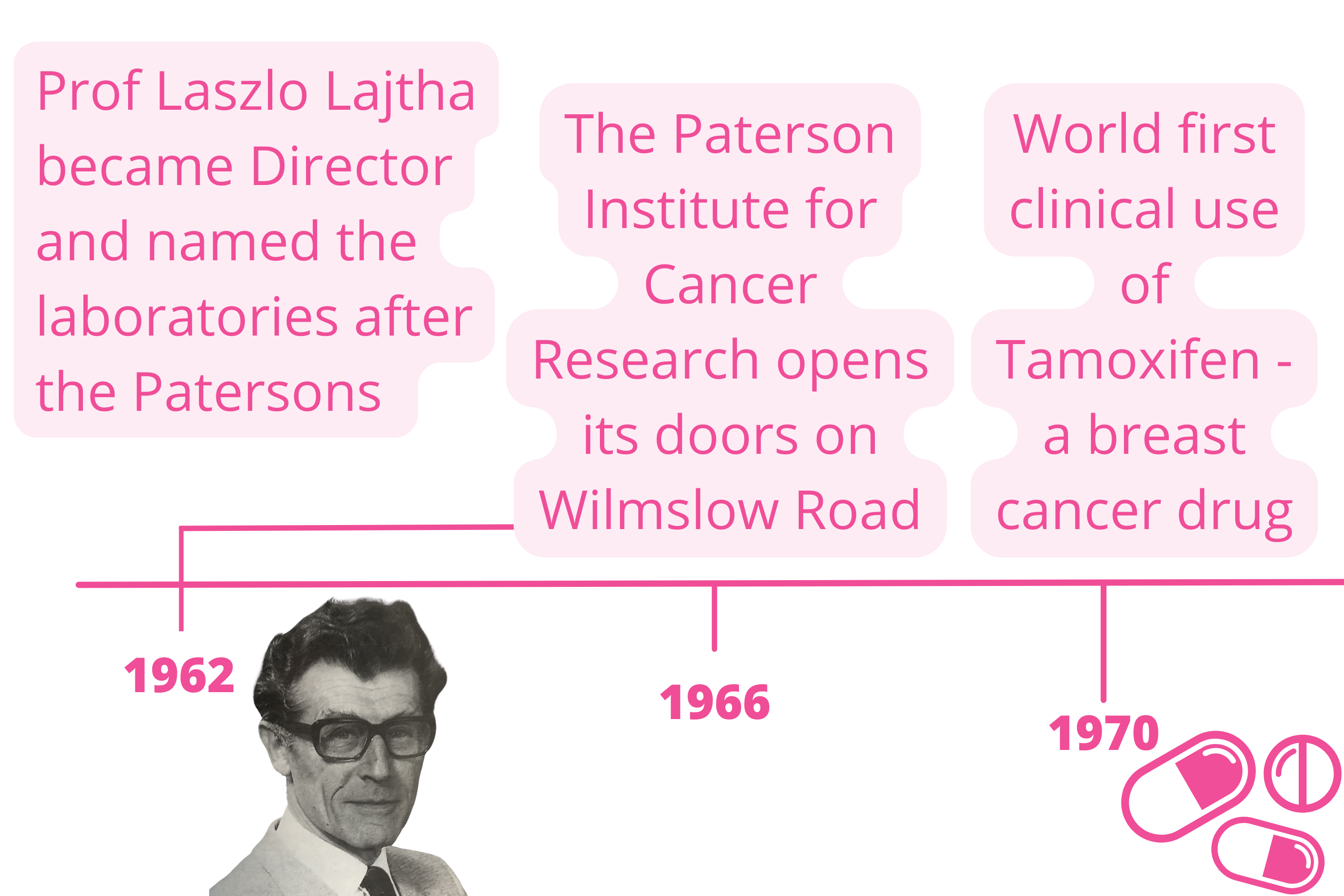
Professor Laszlo Lajtha
On 8 October 2021, the CRUK Manchester Institute, together with the Consulate General of Hungary Manchester, celebrated the life and scientific contributions of Professor Laszlo Lajtha. May of the previous year would have been the centenary of his birth.
The day brought together Manchester and Hungarian research through the celebration of Prof Lajtha, who was a pioneer in the research of stem cell biology and haematology.
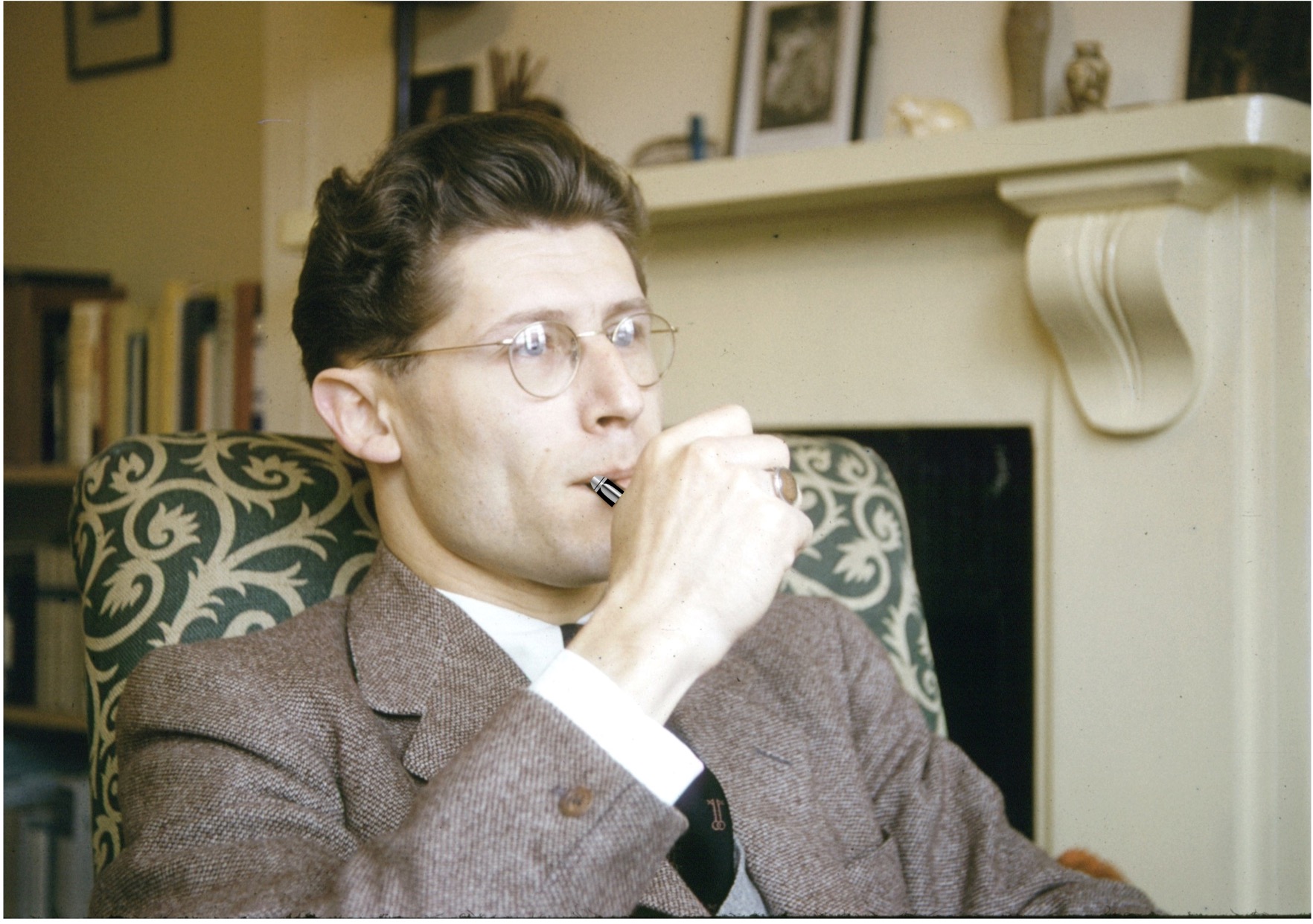
The Paterson timeline to date
Our scientific history
The History of the Paterson Institute
Relocation to the Paterson Building
In April 2023, the Paterson Building in Withington was completed. Then our research staff and students, along with all our core facility and operations teams, began to move in, with all the process completed by August 2023.
These videos capture some of the highlights of the relocation process.
